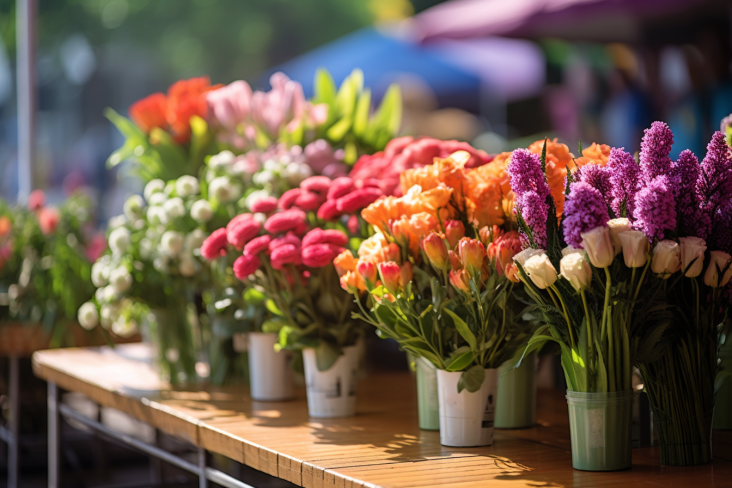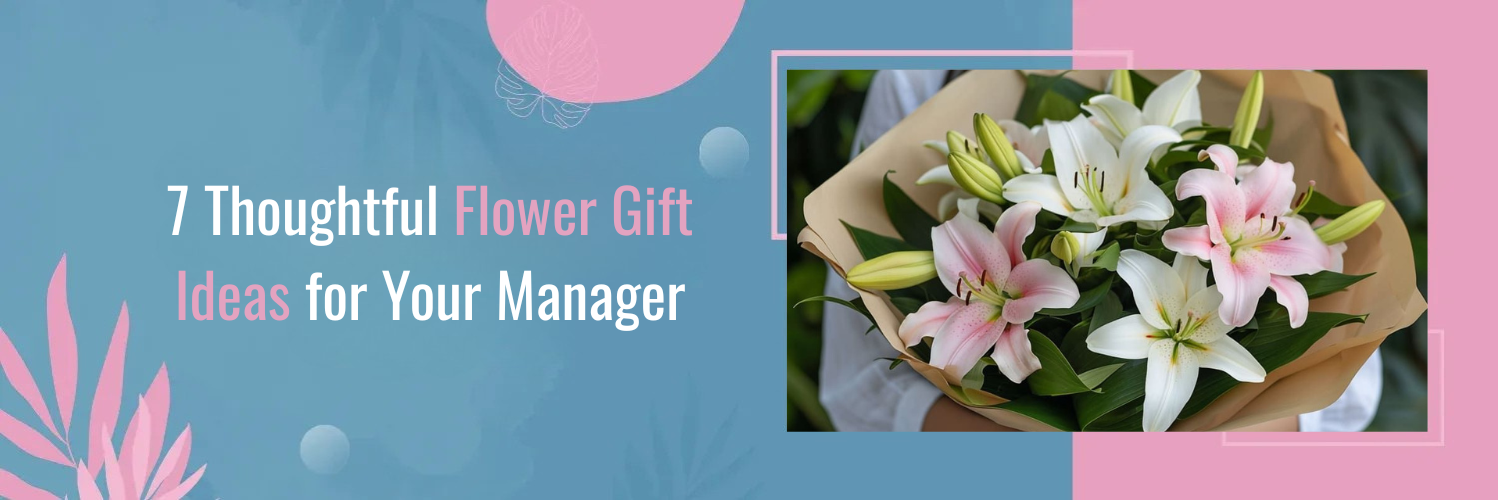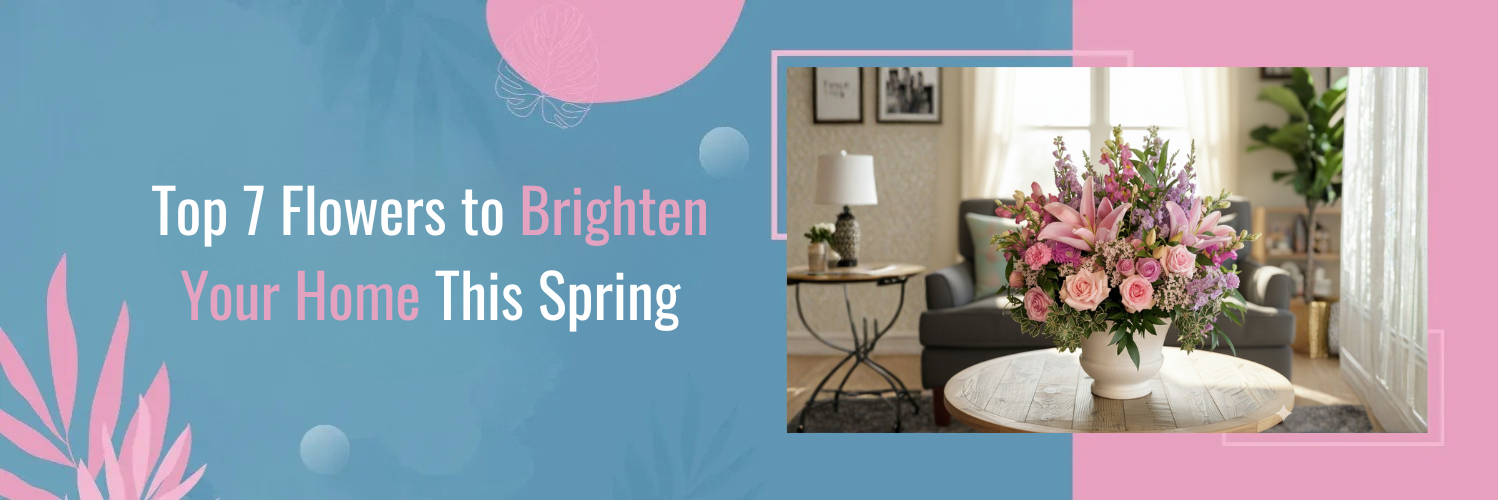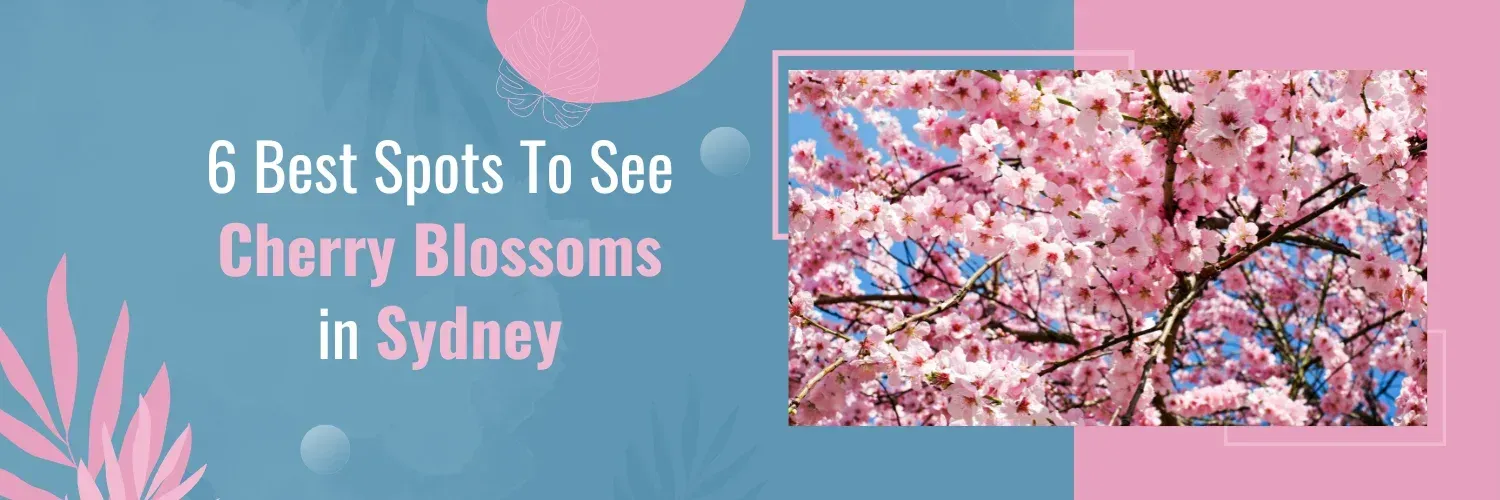Birth Month Flowers

Birth flowers are a charming concept that has been cherished for centuries. They are not only associated with the months of the year but also with astrology and the zodiac signs. These floral symbols carry meanings and emotions that have been passed down through generations, making them a meaningful part of our lives. The idea of birth month flowers traces its roots to the ancient world, where it was believed that each flower had specific powers and attributes. Over time, these floral connections were linked to astrology, connecting the flowers with the signs of the zodiac. This unique blend of nature and mysticism gives birth month flowers a special place in our hearts. Let’s explore this fascinating world, starting with the birth flower for January.
Have you ever wondered about the significance of the flower associated with your birth month?
Birthmonth flowers are a delightful tradition that connects each month with a specific flower, offering a unique and beautiful way to celebrate birthdays. In this blog, we will delve into the world of birth month flowers, exploring their symbolism, historical significance, and the stories behind them.
January – Carnation

January, the first month of the year, is represented by the vibrant and versatile Carnation. These beautiful blooms have a long and storied history, making them a fascinating choice as the birth flower for January.
Symbolism and Historical Significance
Carnations are known for their delicate, fringed petals and sweet fragrance. They have been associated with various symbolic meanings throughout history. In ancient times, they were often used in garlands and wreaths to celebrate special occasions and events. The name “Carnation” is believed to have originated from the Latin word “carnis,” which means flesh or incarnation , possibly because of the flower’s pinkish hue.
One of the most common symbolic meanings of Carnations is love and admiration. Different colours of Carnations convey different emotions. Red Carnations, for example, symbolize deep love and affection, while pink Carnations are often associated with gratitude and admiration. White Carnations represent purity and innocence.
Fun Facts and Myths
Carnations also have their fair share of intriguing myths and legends. In Greek mythology, they are believed to have sprung from the tears of the goddess Venus as she wept over the death of Adonis, her beloved. This association with love and devotion has made Carnations a popular choice for romantic gestures and bouquets.
Interestingly, Carnations are also known for their spicy and clove-like scent. This unique fragrance has been used in perfumes and culinary dishes, adding an aromatic dimension to their appeal.
Today, Carnations remain a popular choice for a wide range of occasions, from birthdays to Mother’s Day, and even as a symbol of love during weddings.
Incorporating Carnations into Birthday Celebrations
If you were born in January, consider incorporating Carnations into your birthday celebrations in various ways:
- Choose a bouquet of Carnations in your favourite color as a birthday gift to yourself.
- Decorate your birthday cake or table with Carnations for a festive touch.
- Create personalized Carnation-themed invitations or party favours for a unique and meaningful celebration.
February – Violet
February, often associated with the depths of winter, brings forth the delicate and charming Violet as its birth flower. These dainty blooms possess a unique beauty and carry deep cultural and historical significance, making them a perfect fit for the month of love.
Cultural and Historical Meanings
Violets have been cherished for centuries, not only for their lovely appearance but also for the sentiments they represent. In Victorian England, Violets were a symbol of affection and loyalty, making them a popular choice for romantic gestures and gifts. The Violet’s small, sweet-scented blossoms have the power to convey deep emotions.
Interesting Stories and Legends
One of the most famous stories associated with Violets is the legend of Saint Valentine, a Roman priest who defied Emperor Claudius II’s ban on marriages for young men. Saint Valentine is said to have sent a message of love and faithfulness to his jailer’s daughter, signed with a Violet flower, before his execution. This act of love is believed to have inspired the use of Violets as symbols of love and devotion.
In addition to their romantic associations, Violets have also been linked to Greek mythology. According to the story, the god Zeus pursued a beautiful mortal woman named Io. When his wife Hera discovered his infidelity, she turned Io into a heifer and sent a gadfly to torment her. Io ate Violets to find solace from the gadfly’s bites, giving Violets their association with tranquillity and refuge.
Incorporating Violets into Celebrations
Violets’ delicate beauty and sweet fragrance make them a wonderful addition to birthday celebrations in February. Here are some ways to incorporate Violets into your festivities:
- Create a birthday bouquet with Violets as the centrepiece.
- Use Violet-themed decorations or table settings for a charming and romantic ambience.
- Craft homemade Violet-infused gifts, such as scented candles or potpourri, to share with loved ones.
March – Daffodil
As winter begins to yield to the promise of spring, March is greeted by the cheerful and vibrant Daffodil as its birth flower. Daffodils are renowned for their sunny yellow blooms and are often seen as harbingers of warmer days ahead.
Symbolism and Significance
Daffodils are symbols of renewal, hope, and new beginnings. Their bright yellow colour represents happiness, optimism, and the end of winter’s cold grip. As they emerge from the ground, Daffodils bring with them the assurance that spring is on its way, bringing life and colour back to the world.
Regional and Cultural Variations
While Daffodils are the primary birth flower for March in many regions, some cultures have different flowers associated with this month. For example, in Japan, the Cherry Blossom (Sakura) is often linked with March. The Cherry Blossom symbolizes the beauty and transience of life, and its blooming season coincides with March in Japan.
Incorporating Daffodils into Celebrations
Daffodils’ vibrant and joyful appearance makes them a fantastic addition to birthday celebrations in March. Here are some creative ways to incorporate Daffodils into your festivities:
- Craft a Daffodil-themed birthday card or invitation for a personalized touch.
- Arrange a bouquet of Daffodils as a centrepiece for your birthday table.
- Decorate your home with Daffodils to create a spring-like atmosphere.
April – Daisy
April, a month known for its springtime splendour, introduces Daisy as its birth flower. These charming and unpretentious flowers are symbolic of purity, innocence, and the fresh beginnings that spring represents.
Folklore and Symbolism
Daisies have been celebrated for their simplicity and delicate beauty. In the language of flowers, Daisies convey innocence and purity, making them a popular choice for bouquets at weddings and other special occasions. The name “Daisy” is derived from the Old English word “day’s eye” because the flower’s petals open and close with the sun, resembling an eye-opening in the morning and closing at night.
Incorporating Daisies into Birthday Celebrations
Daisies’ timeless charm and symbolism make them a wonderful addition to birthday celebrations in April. Here are some delightful ways to include Daisies in your festivities:
- Create a birthday bouquet featuring Daisies as the focal point.
- Use Daisy-themed decorations, such as tablecloths or banners, to add a touch of innocence and simplicity to your party.
- Craft handmade Daisy-inspired party favours or invitations for a personal touch.
May – Lily of the Valley
May, a month of blooming flowers and warmer weather, introduces the exquisite Lily of the Valley as its birth flower. These small, bell-shaped flowers are renowned for their enchanting fragrance and delicate appearance.
Cultural and Historical Connections
Lily of the Valley has deep cultural and historical significance. In Christian traditions, it has been associated with the Virgin Mary, symbolizing purity and humility. The name “Lily of the Valley” is believed to have originated from the Old Testament’s Song of Solomon, where it is described as “the lily of the valleys.” This connection to biblical references has added to its mystique and allure.
Using Lily of the Valley in Gifts and Decorations
Due to their elegant beauty and sweet fragrance, Lily of the Valley flowers are often used in wedding bouquets and floral arrangements. They have a timeless appeal that adds a touch of grace to any occasion. Here are some ways to incorporate Lily of the Valley into birthday celebrations in May:
- Select a birthday bouquet that features Lily of the Valley as a fragrant centrepiece.
- Use Lily of the Valley-themed decorations, such as floral garlands or place settings, for an elegant and sophisticated ambience.
- Craft handmade gifts or party favours inspired by the delicate charm of Lily of the Valley to share with loved ones.
June – Rose
June, a month synonymous with weddings and romance, introduces the iconic Rose as its birth flower. Roses have a long and storied history, coming in a wide range of colours, each carrying its unique meaning.
Diverse Meanings and Varieties
Roses have been cherished for their beauty and fragrance for thousands of years. The different colours of Roses convey various emotions and sentiments:
- Red Roses symbolize deep love and passion.
- White Roses represent purity and innocence.
- Yellow Roses convey friendship and joy.
Gifting Roses for Different Occasions
Roses are not only given on birthdays but also many other occasions. They are a classic choice for anniversaries, Valentine’s Day, and other special moments. The choice of Rose colour can express your feelings and sentiments effectively. For instance, red Roses are often exchanged between lovers, while white Roses are popular at weddings and to express sympathy.
Incorporating Roses into Birthday Celebrations
Roses, with their timeless elegance and profound symbolism, make an ideal addition to birthday celebrations in June. Here are some creative ways to incorporate Roses into your festivities:
- Choose a birthday bouquet featuring Roses in the recipient’s favourite colour.
- Decorate your birthday cake with edible Rose petals or cake toppers.
- Use Rose-themed decorations, such as rose petals scattered on tables or Rose-shaped candles, to create a romantic and sophisticated atmosphere.
July – Larkspur
July, a month of summer warmth and beauty, introduces the elegant Larkspur as its birth flower. These flowers, with their tall and striking flower spikes, add a touch of grace and charm to gardens and bouquets alike.
Symbolism and Unique Traits
Larkspur flowers are often associated with an open heart and strong attachment, making them an ideal choice for conveying strong emotions. Their tall spikes of colourful blossoms stand out in gardens and floral arrangements, making a bold and striking statement.
Gardening Tips for Growing Larkspur
If you’re passionate about gardening, you might consider planting Larkspur in your garden. They thrive in sunny locations and well-drained soil. Here are some gardening tips for growing Larkspur:
- Choose a sunny spot in your garden with well-drained soil.
- Plant Larkspur seeds in the early spring or fall, and they will reward you with their vibrant blooms.
- Keep the soil consistently moist but not waterlogged.
- Prune the spent flowers to encourage new growth and prolonged blooming.
August – Gladiolus
August, a month that embodies the height of summer’s beauty, introduces the majestic Gladiolus as its birth flower. These tall, sword-shaped blooms come in a variety of colours and are known for their striking appearance.
Historical and Cultural Aspects
Gladiolus flowers have a rich history and are associated with strength and moral integrity. The name “Gladiolus” is derived from the Latin word “gladius,” which means sword. This association with swords and gladiators signifies strength, courage, and honour. In ancient times, Gladiolus blooms were often carried by Roman gladiators into the arena, symbolizing their bravery.
Care and Maintenance of Gladiolus Plants
If you want to grow Gladiolus in your garden or give them as a gift for an August birthday, it’s important to know how to care for them. Here are some care and maintenance tips for Gladiolus plants:
- Plant Gladiolus corms (bulbs) in well-drained soil with plenty of sunlight.
- Stake the tall flower spikes to prevent them from bending or falling over.
- Water Gladiolus plants regularly, keeping the soil consistently moist.
- Deadhead spent blooms to encourage new flowers and prolong the blooming season.
September – Aster
September, a month when summer transitions into the cool embrace of autumn, introduces the charming Aster as its birth flower. These star-shaped blossoms come in various colours and are associated with enchantment and mystery.
Significance and Mythology Surrounding Asters
Asters have been regarded as symbols of love and patience. According to Greek mythology, Asters were created from the tears of the goddess Astraea, who wept over the lack of stars in the sky. This association with stars adds a touch of celestial magic to Asters.
Incorporating Asters into Home Decor
Asters’ vivid colours and unique star-like shape make them an excellent choice for adding a pop of colour to your home decor. Here are some ways to incorporate Asters into birthday celebrations in September:
- Arrange a bouquet of Asters as a striking centrepiece for your birthday table.
- Use Aster-themed decorations, such as star-shaped garlands or table settings, for an enchanting and mystical ambience.
- Craft handmade gifts or party favours inspired by the beauty of Asters to share with loved ones.
October – Marigold
October, a month known for its autumnal splendour and harvest celebrations, introduces the vibrant Marigold as its birth flower. These cheerful and fiery-colored flowers are symbolic of warmth, passion, and devotion.
Cultural and Symbolic Meanings
Marigolds have cultural significance in various parts of the world. In Mexico, they are used to celebrate Dia de los Muertos (Day of the Dead) and are believed to guide the spirits of the deceased to their loved ones. Marigolds are also associated with affection and devotion, making them a meaningful choice for birthdays and other special occasions.
Traditions and Festivals
Marigolds are an integral part of many festivals and celebrations, particularly during the autumn season. Their bold colours and unique scent make them a popular choice for floral decorations and garlands. In India, Marigolds are used extensively in religious ceremonies and are considered auspicious and sacred.
Incorporating Marigolds into Celebrations
Marigolds’ vibrant and fiery appearance makes them a wonderful addition to birthday celebrations in October. Here are some creative ways to incorporate Marigolds into your festivities:
- Create a birthday bouquet featuring Marigolds as the focal point.
- Use Marigold-themed decorations, such as floral wreaths or garlands, to infuse warmth and vibrancy into your party.
- Craft homemade Marigold-infused gifts, such as scented sachets or potpourri, to share with loved ones.
November – Chrysanthemum
November, a month when autumn’s splendour begins to give way to the serenity of winter, introduces the elegant Chrysanthemum as its birth flower. These flowers, with their numerous petals and diverse colours, are a symbol of joy and longevity.
Symbolism and Significance
Chrysanthemums have deep cultural and symbolic meanings. In many cultures, they are associated with honour, loyalty, and happiness. In Japan, the Chrysanthemum is the symbol of the Emperor and the imperial family, signifying the highest ideals of virtue and nobility. This association with royalty adds to the Chrysanthemum’s sense of grace and elegance.
Arranging Chrysanthemum Bouquets
Chrysanthemums are popular choices for creating beautiful bouquets and floral arrangements. Their wide variety of colours, from deep reds to soft pinks, allows for versatile and striking compositions. Here are some ways to incorporate Chrysanthemums into birthday celebrations in November:
- Select a birthday bouquet that showcases Chrysanthemums as a symbol of joy and happiness.
- Decorate your birthday cake with Chrysanthemum-shaped fondant decorations for an elegant touch.
- Craft handmade Chrysanthemum-inspired party favours or invitations for a personalized and graceful celebration.
December – Poinsettia
December, a month filled with holiday cheer and celebrations, introduces the vibrant Poinsettia as its birth flower. These festive red and green plants are synonymous with Christmas and the joy of the holiday season.
Holiday Associations and Care Instructions
Poinsettias have become iconic symbols of the holiday season. Their vibrant red leaves, called bracts, are often mistaken for flowers. Here are some care instructions for Poinsettias to keep them looking their best throughout the holiday season:
- Place your Poinsettia in a location with bright but indirect sunlight.
- Keep the soil consistently moist but avoid overwatering, which can cause root rot.
- Poinsettias are sensitive to drafts and temperature extremes, so avoid placing them near heaters or open windows.
Creative Uses in Christmas Decor
Beyond their potted form, Poinsettias can be incorporated into various Christmas decorations. Here are some creative ways to use Poinsettias in your December birthday celebrations and holiday decor:
- Include Poinsettias in your holiday table centrepieces for a festive and colourful touch.
- Craft Poinsettia wreaths or garlands to decorate your home’s entryway or fireplace mantle.
- Use Poinsettias as cut flowers in holiday bouquets or arrangements for a burst of festive charm.
Conclusion
Birth month flowers offer a unique and meaningful way to celebrate birthdays. Each flower has its symbolism, history, and charm, allowing individuals to connect with their birth month specially. Whether it’s the vibrant Marigold of October or the elegant Rose of June, birth flowers add beauty and depth to birthday celebrations. We encourage you to discover your birth flower and explore the stories and traditions associated with it. Embrace the beauty and symbolism that these flowers bring to your life and celebrations.
Ready to celebrate with the perfect birth month flowers?
Bourkes Florist is here to help you bring the beauty of these flowers into your life and the lives of your loved ones. Order your favourite birth month flowers and have them delivered right to your doorstep, adding a touch of nature’s elegance to your special moments. Don’t miss out on the opportunity to make birthdays and occasions even more memorable with the perfect bouquet. Order now !
FAQs
Q: How were birth month flowers chosen?
Birth month flowers have historical and cultural origins. They were often associated with the zodiac signs, birth months, and astrological traits. Over time, these associations became deeply rooted in tradition.
Q: Can I use my birth flower for special occasions other than my birthday?
Absolutely! Birth flowers can be used for various special occasions, such as anniversaries, and weddings, or as thoughtful gifts to express love and appreciation.
Q: Are there variations in birth flowers based on different cultures?
Yes, some cultures have variations in birth flowers for the same month. It’s fascinating to explore these differences and learn about the unique meanings attached to each flower in different regions.
Q: Are there specific colours associated with each birth flower?
While some birth flowers have traditional colours associated with them, the colour choices can vary depending on personal preference and cultural interpretations. For example, Roses are often associated with red for love, but they come in various colours, each with its own meaning.





























